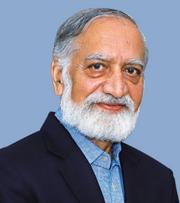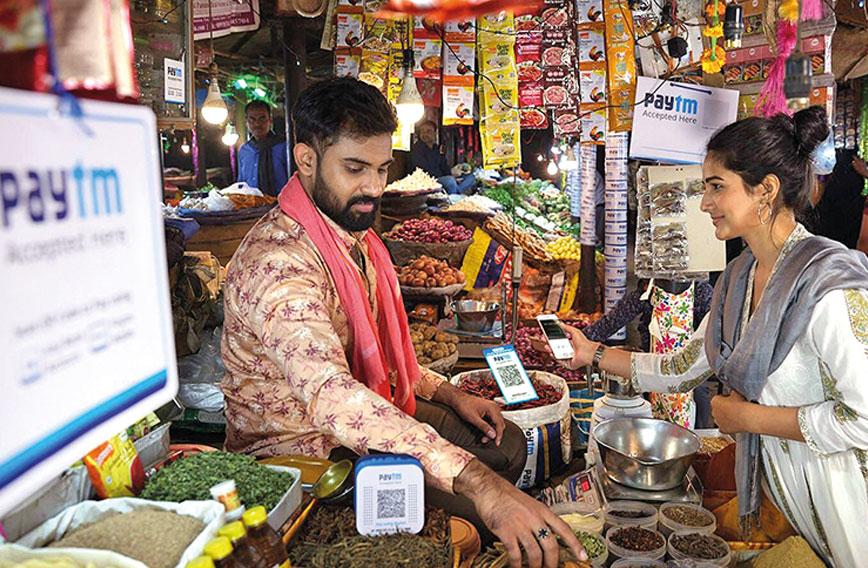
KIRAN KARNIK
DEMATERIALIZATION is a staple in many a sci-fi film: an object or person is zapped by a beam-gun and, poof, just disappears! This, though, is not mere fiction. Digitization has been, in effect, dematerializing things for quite a while, even if it does not make them disappear. Books and music on compact discs have been digitized for decades, transforming their physical form into bits and bytes: in a sense, dematerializing them. This, or sending documents in digital form after scanning them, has become so routine that we hardly think of it. Yet, digitization — which triggered disintermediation many years ago — is again changing things in a big way. In combination with new business models, it could now have an even more profound impact.
Already, in day-to-day living, we routinely experience the impact, though its ubiquity makes it almost invisible. Years ago, I would not step out of my home without my wallet — even if my financial status constrained its contents to only low-denomination notes. Today, I do not bother about notes in my purse, but do ensure that it has my credit card. For younger people, even a card is passé: all they need is their mobile phone, for that is their digital wallet. A few clicks, and a payment or money transfer is done. Thanks to demonetization, digital payments got a big boost, and even street-side vendors embraced it, with Paytm signages becoming the commonest signboard across the country. While notes are back in popularity (with more in circulation than ever before), digitization of payments and of cash have certainly taken root. On an even wider level, fintech has revolutionized the banking and financial services industry. Share certificates were dematerialized long ago, and practically all financial transactions are now done digitally.
Despite their convenience, e-books have not quite replaced the hard-copy version. The months-long lockdown has, however, given them a boost. The lockdown, and continuing fears of contracting the virus through indirect touch, affected newspapers in a big way. As a result, online news and newspapers have become far more popular. Old habits die hard, though, and the return of hard-copy newspaper delivery will reduce the peak of online access. Yet, a window has opened, and seems likely to accelerate the dematerialization of the printed word. Of course, in many developed countries, and amongst the young everywhere, accessing news online was already widespread and the trend is growing.
The ease with which one can now photograph a document with a cell phone and ‘WhatsApp’ it to a recipient is rapidly doing away with the need for sending any physical (hard copy) documents, dematerializing these, along with application or registration forms. It has also converted WhatsApp (and Paytm) into verbs, indicative of the popularity and the penetration of the digital mode.
Education has seen increasing digitization, with reading material, lectures and assignments available online. As in the case of newspapers, the COVID lockdown provided a fillip, with classes for schools and colleges forced to shift online. Also, with more people at home and having time on their hands, online courses — including tuition and music classes — have seen an upsurge. Seminars have become webinars, moving from brick-and-mortar to cyber space via video-conferencing platforms like Zoom. In effect, conference rooms have been dematerialized.
The return of normalcy — in whatever form, old or new — will see students back in learning institutions; yet, despite many drawbacks, the positives of the online mode will certainly drive pedagogy towards a blended model which will include a fair proportion of online content. Further, knowledge upgradation for working professionals, as well as the sheer interest of many, means an increasing number of online courses. Many such courses, including those offered by some universities, are available for free.
COVID's impact on healthcare goes beyond the obvious. Here, too, the lockdown meant rediscovery of existing technologies, and their embellishment for wider use. Tele-consultation, long feasible and demonstrated, became unavoidable due to movement restrictions and is now widely used. This too is a form of dematerialization: moving the physical, face-to-face consultation to the digital domain.
Facilitating tele-consultation are various apps that help in fixing an appointment and making a payment — disintermediating the receptionist —besides selecting a doctor. Remote diagnostics through devices and ‘wearables’ has grown, with sensors that pick up body function data being linked to transmission devices (like cell phones) for review by a doctor. An alternative is analysis of this data by machine learning algorithms or artificial intelligence (AI). Similarly, a Google search about the symptoms can provide possible diagnoses of the likely ailment — along with cures, and the side effects of any recommended medication. Your neighbourhood doctor may be dematerialized and replaced by Dr Google.
There are other areas too in which dematerialization is being caused by digitization. Yet, what we see today is only a start: there is even greater disruption ahead, triggered by the confluence of technology and innovative business models. The latter are increasingly based on free service to the consumer, financed by advertising, with revenue being determined by numbers and audience-targeting. This requires scale (hence free services, continuously improved by big investments in research) and the ability to profile customers for specific reach. The latter requires vast amounts of detailed data. Therefore, your personal data is the price you are paying for “free service”. This is the model used by Google, WhatsApp, Facebook and content providers like YouTube and many educational platforms.
The rapid spread of this model entails no cash fees (since the data is provided by the user, the term ‘free’ may not be appropriate), and is, therefore, a form of ‘demonetization’. This will soon pose a challenge to the financial model of universities, clinics, hospitals, media companies and many others.
Digitization results in disintermediation, then dematerialization and, finally, demonetization. Organizations and professional service providers will have to adopt new operating models to survive. Individuals will have to sacrifice privacy to avail of free services. Are we prepared for this 3D digital assault on traditional structures and practices?
Kiran Karnik is an independent strategy and public policy analyst. His recent books include eVolution: Decoding India’s Disruptive Tech Story (2018) and Crooked Minds: Creating an Innovative Society (2016). His forthcoming book is on India in 2030.
Comments
Currently there are no Comments. Be first to write a comment!




